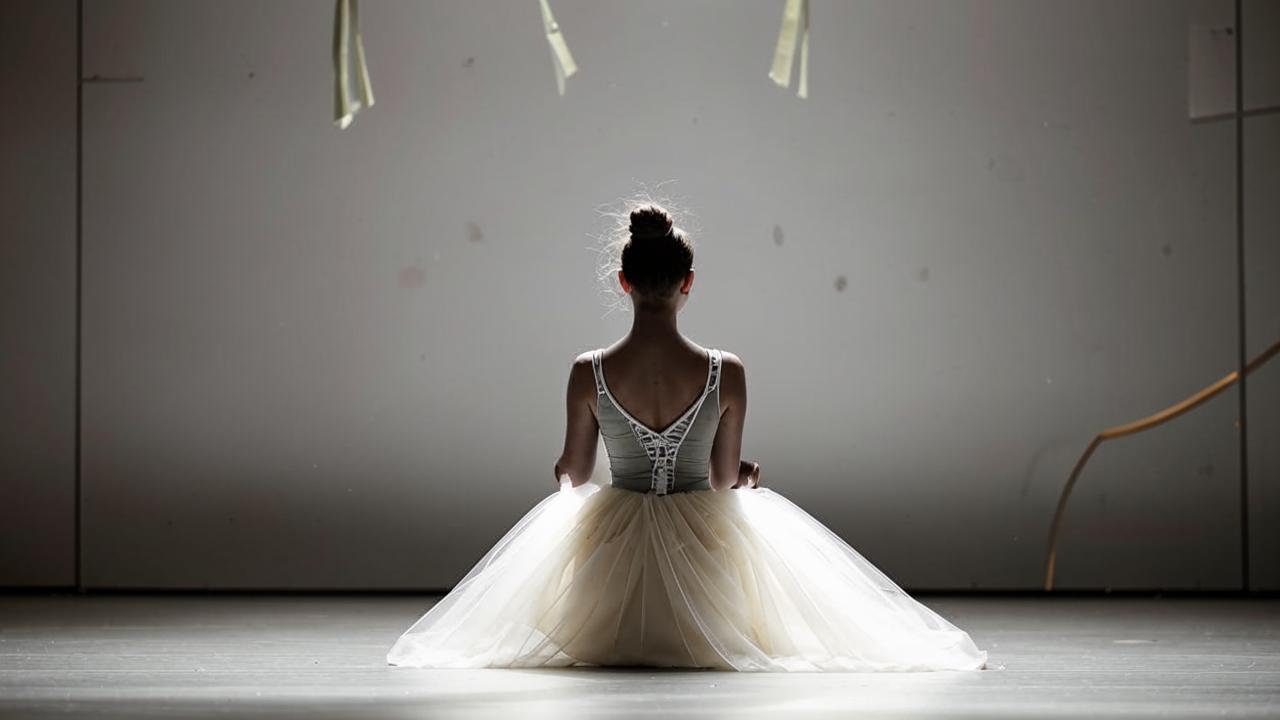Traditionally, on New Year’s Eve, legendary gymnasts, ballet dancers, circus performers, aerial gymnasts and acrobats will gather on the stage of the VTB Ice Palace. On the eve of the premiere of the unique sports show “For Sport! City of the Future” we had a chance to talk to the former soloist of the Mariinsky Theater, a participant of the show, ballerina Oksana Bondareva. Her repertoire includes leading roles in the ballets Corsair, Giselle, Sleeping Beauty, The Nutcracker, Swan Lake, Don Quixote, La Sylphide, Laurencia, Samodurov’s Minor Sonatas, Nacho Duato’s ballets and more. In our interview Oksana will talk about the beginning of her creative path, the lifestyle of a ballet dancer and share her impressions about working on the new show.

Oksana Bondareva’s creative path
–Oksana, tell us about the beginning of your career path: how old did you start ballet training and how was it?
– My mom wanted to put me in ballet school from theageof 4, but we lived in Kazakhstan and there was no ballet school in the city. So I started to do gymnastics, even managed to complete the program of candidate master of sports. And later, when we moved to Ukraine, my mother gave me to the choreographic school at the Dnepropetrovsk Opera and Ballet Theater. At that time ballet did not arouse much interest in me, it was a monotonous activity for me – standing for hours at the barre… so I forced myself to go to classes by force.
–When was the turning point?
– Everything changed when at the end of the school year we went on stage with a performance concert. During it, I was imbued with the stage atmosphere, felt the warmth of the audience, and that’s when I realized that I wanted to do ballet. By that time I was already dancing on pointe – the only one from our class. Many things were easier for me, because I had a different muscular corset, because I was professionally engaged in gymnastics.
– Oksana, can you tell us how you came to join the Mariinsky Theatre Company?
– At first I worked at St Petersburg’s Mikhailovsky Theatre, after completing an internship at the Moscow State Academy of Choreography. It was there that I met Mikhail Grigorievich Messerer, and I also worked with the Spanish choreographer Nacho Duato.
Both the audience and the stage warm me at the Mikhailovsky Theatre. Here I feel at home.
A little later I was offered a position at the Mariinsky Theatre. Over the 3 years I gained experience, met brilliant teachers, danced on the historic stage, it was wonderful. Then I returned to my native Mikhailovsky Theatre, where I am still working, where I am warmed by both the audience and the stage. Here I feel at home.

The lifestyle of a ballet dancer: rehearsals and dietary principles
– Is the lifestyle of ballet dancers somehow different from that of an ordinary person?
– A ballet dancer remains a ballet dancer 24 hours a day – that’s the most important thing. We have almost no days off, if we have a vacation, it’s only two weeks a year at the most. Usually we work 6 days a week, Monday is our day off. But even that can be busy. When I worked at the Mariinsky Theatre, almost every weekend was busy: someone is working on their technique, someone has a performance the day before and needs to rehearse. The working day is usually structured like this: in the morning we go to class, perform exersises, then rehearse.
– How long does the working day last?
– Depending on what performances the day before, how many times the artist has to go on stage. One rehearsal usually lasts an hour, but before it you have to warm up – everything together takes about two hours. There are 2-3 rehearsals per day, which means that the average working day lasts 6 hours, sometimes more, sometimes less.
A ballet dancer remains a ballet dancer 24 hours a day.
– Are there certain food rules or diets specifically for ballerinas?
– On the day of the performance it is not forbidden to eat something caloric, because we spend a lot of energy on stage. There are no strict dietary restrictions: some are prone to obesity, some are not. In general, the diet of ballerinas does not differ much from that of an ordinary person who eats properly. I would love to eat my last meal at 6 pm, but I have such an organism that I can’t fall asleep on an empty stomach. So for dinner I can eat cucumbers with salad leaves, boiled egg. Breakfast is the usual – cottage cheese or yogurt.
Is ballet for everyone or not?
– Oksana, tell me, at what age to give the child to the ballet school?
– Before you ask yourself this question, you should first of all look at the child’s abilities and desires. Because, firstly, you can’t go against the child’s wishes – otherwise it will be a torment for both the child and the parents. Secondly, you have to realize that a child must have natural talents to be able to do ballet. For example, when I was a child, I was always dancing and twirling, and my parents didn’t know where to channel my energy (smiles).
Advice: “I would advise giving a child to ballet from the age of 9, but before that (from 3-4 years old) there should be physical activity: rhythmic gymnastics, figure skating, so that the muscular corset was grabbed and the body was prepared”.
– At what age is it too late to go to ballet school?
– I have only once met talented dancers, winners of international competitions, who started their career in ballet at the age of 17-18. Of course, it is already much more difficult, because it seems to me that at that age it is difficult to comprehend the classics.
– Is it possible for people in their 20s to start practicing ballet?
– If you plan to study for yourself, why not? Practicing plasticity, stretching – all this helps to keep your body young. But it’s impossible to get into professional ballet after 20, it’s a unique case.

About the new show
– What will be the show “For Sport! City of the Future”, which will premiere in December? What is your role in the project?
– This is a very unexpected project for me, but the opportunity to participate in one show with gymnasts of such greatness is a gift of fate. In general, this picture is a story of the future and that there is love there too, no matter how people are. Choreographer Oleg Gabyshev showed in this number three stages of love: budding, development and extravaganza (or climax). We will be opening the show program. In this production I perform a dance on pointe, it is a bit unconventional, because Oleg tried to modernize the classics with modern unconventional elements. I think it will be very interesting – a modern ballet on pointe.





